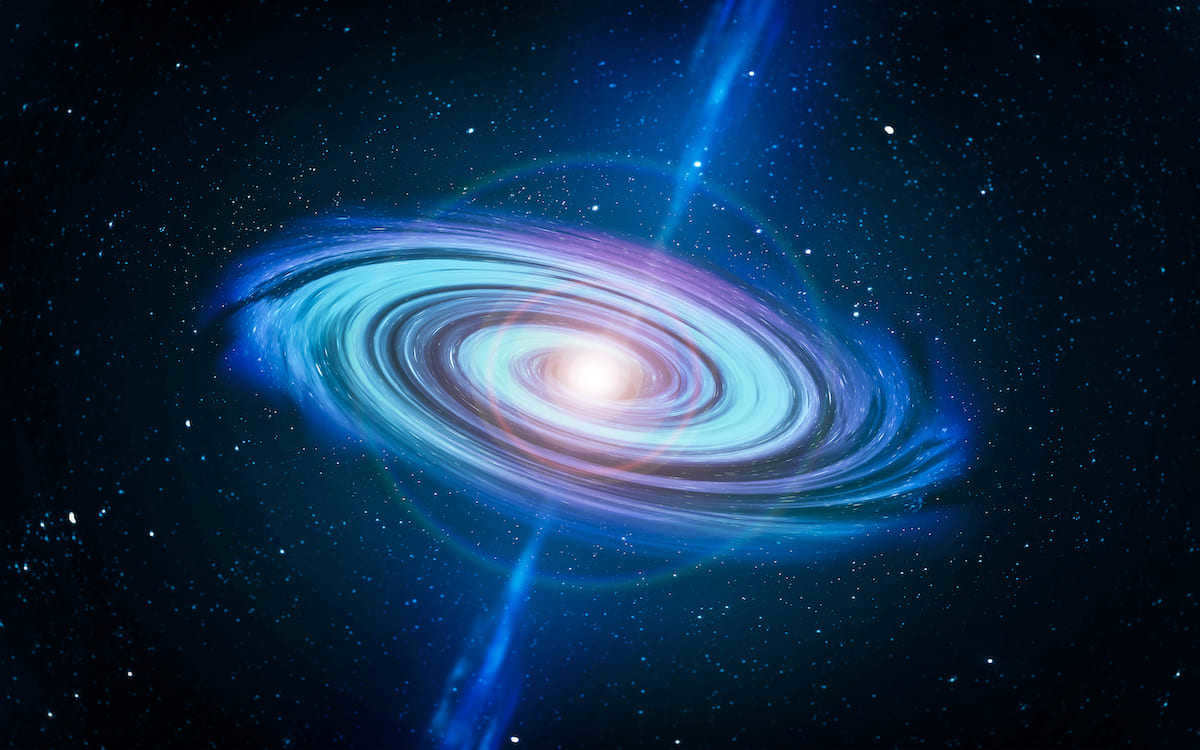
A hypothetical physical entity in the universe that is impenetrable to any matter, a white hole is the opposite of a black hole. While black holes consume everything, including light, white holes only emit matter outward. Some scientists propose that if black holes exist, there must also be white holes that prohibit any entry.
The properties of white holes are often explained in relation to black holes, as the latter are tangible and actively studied. However, white holes remain purely theoretical and lack empirical evidence.
The presence of white holes is supported by the theory of General Relativity (GTR) developed by Albert Einstein. GTR includes equations that describe the existence of wormholes or “moleholes,” which are essentially tunnels in the fabric of space-time. These tunnels are allowed by the principles of general relativity. In 1916, German scientist Karl Schwarzschild became the first person to use GTR to solve an astrophysical problem. As a result of his work, Schwarzschild’s solution predicted the existence of a wormhole that comprises a black hole, a white hole, and the connection between two separate universes. Therefore, according to Schwarzschild’s mathematical equations, white holes are also expected to exist.
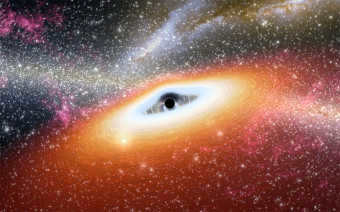
One reason why white holes are considered implausible is their supposed ability to decrease entropy, which is the measure of energy dissipation. Theoretically, a white hole releases a significant amount of energy into space, effectively reducing entropy. This, however, contradicts the second law of thermodynamics, which states that the entropy of a closed system either remains constant or increases over time. As a result, the existence of white holes is incompatible with the current understanding of the universe.
The Origin of the Theory of White Holes
The concept of white holes was formulated by Soviet astrophysicists Igor Novikov and Nikolai Kardashev during the 1960s and 1970s. Novikov describes a white hole as “matter that is held back in the expansion of the universe” and eventually transforms into a black hole.
Igor Novikov, an astrophysicist, discusses the revelation of white holes in his book titled Where the River of Time Flows:
What Sets Black Holes and White Holes Apart
According to Novikov’s theory, white holes may emerge at the point where matter from a black hole is expelled. There is a hypothesis suggesting that an observer who enters the throat of a black hole will emerge from another opening in that throat, far from the black hole they initially fell into. Alternatively, they might “pop out” into the realm of another universe altogether. White holes represent those alternate openings in the throat, from which an observer could potentially “pop out.” In other words, it is impossible to fall into a white hole; one can only escape from it. If such an observer’s flight were to become possible, it would serve as confirmation of the existence of white holes within the universe.
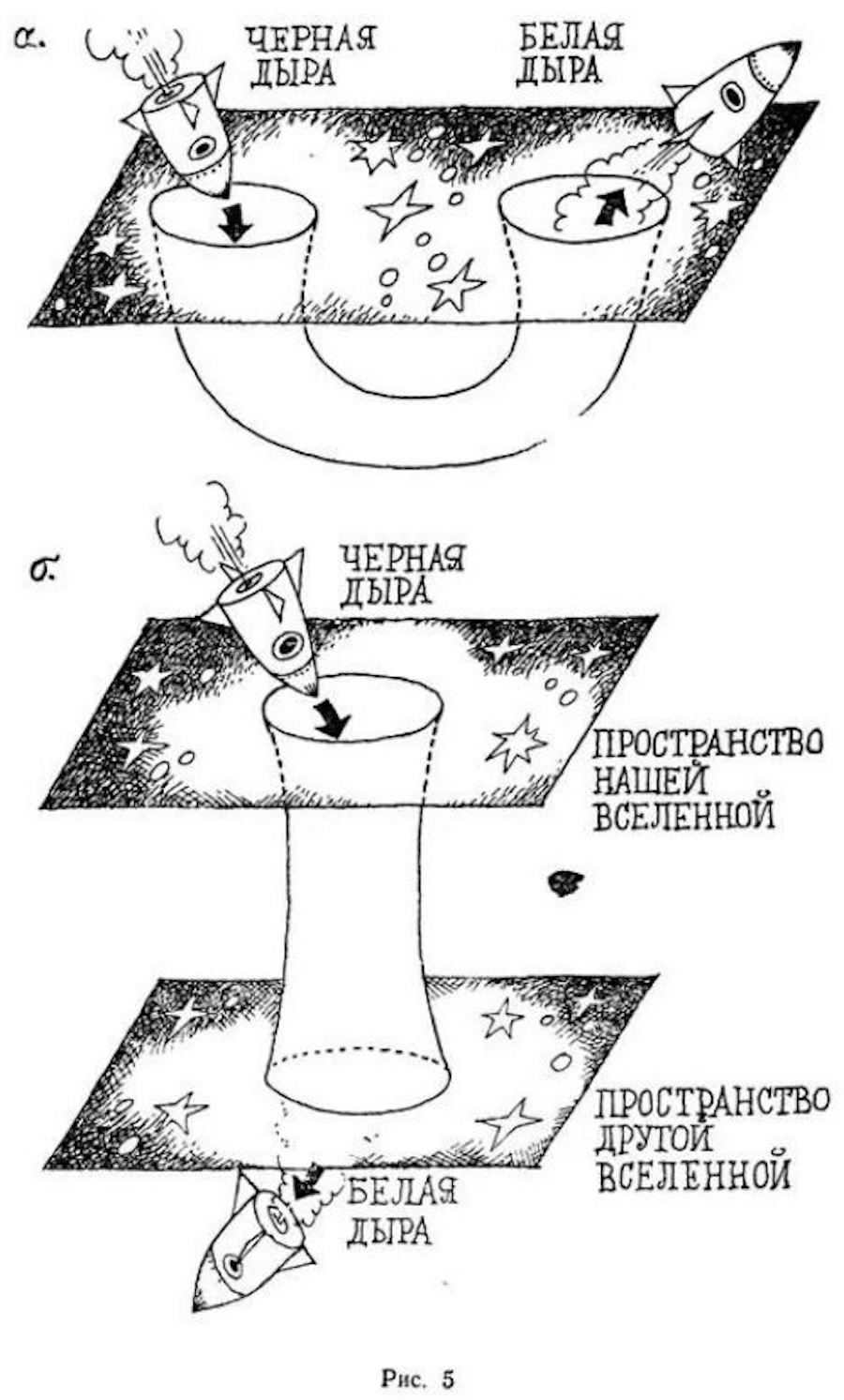
A different hypothesis regarding the origin of white holes was put forward in 2014 by Carlo Rovelli, an Italian theoretical physicist, and his research team at the University of Aix-Marseille in France. They proposed that white holes might emerge as a consequence of black hole demise. Mathematical calculations elucidating white holes demonstrate their extreme instability, which could result in their evaporation or even the annihilation of black holes.
In the words of Carlo Rovelli, a theoretical physicist:
"How does a black hole die? We don’t have the answer. How is a white hole born? Perhaps a white hole is the aftermath of a black hole’s demise."
Are white holes real and where can we find them?
The existence of objects in the universe that could be classified as white holes remains a mystery. Scientists have yet to discover any concrete evidence of their existence or determine how they might have formed. Unlike black holes, which have been observed and associated with certain astronomical phenomena, white holes have never been documented.
According to Israeli astrophysicists Alon Retter and Shlomo Heller, the only known example of a white hole is the Big Bang, the moment of origin for our universe. This event involved a rapid expansion of space that continues to this day. Unlike black holes, white holes are not believed to be long-lasting phenomena and can only be observed during the initial event.
Retter and Heller documented an occurrence of a gamma-ray burst in 2016, which was the most intense release of radiation in the entire Universe. For quite some time, extended gamma-ray bursts have been linked to explosions of supernovae stars, but this recent burst was unusual – it lacked a supernovae explosion. Astrophysicists propose that a white hole was responsible for the outburst. They anticipate that more of these abnormal flares will be observed in the future, providing evidence for the existence of white holes as tangible, not speculative, entities.
What is the appearance of a white hole?
In 1974, physicist Douglas Erdley from the United States concluded that the existence of a white hole is not sustainable, as it rapidly transforms into a black hole. From the perspective of an external observer, a white hole will ultimately resemble a black hole.
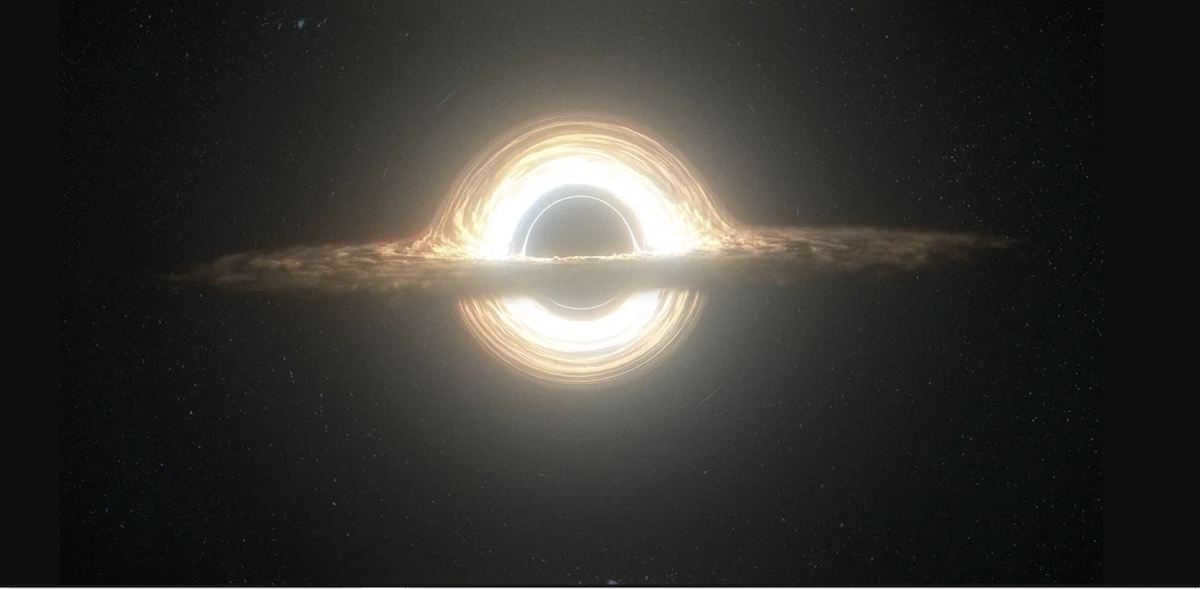
A white hole, as depicted in the movie Interstellar, is said to be the opposite of a black hole (Photo: cerncourier.com)
Current Understanding of White Holes
Kirill Maslennikov, PhD in Physics and Mathematics, Pulkovo astronomer:
“The equations of the general theory of relativity allow for a solution where a singularity exists in an inverse manner to that of a black hole. This hypothetical object is known as a white hole. Unlike a black hole, a white hole expels everything and allows nothing to enter. In doing so, it violates the laws of thermodynamics, but its origin remains a mystery. White holes are occasionally proposed in various exotic theories, but as of now, no observed celestial objects fit this description.”
1.8M
To begin with, dying by falling into a black hole is the most unfavorable way to meet one’s demise, theoretically speaking.
Black holes represent regions in outer space where the gravitational force is incredibly intense, making it impossible for anything to escape. This concept has become a prominent topic in the field of astronomy nowadays. Roger Penrose was awarded half of the 2020 Nobel Prize in Physics for his mathematical research, which demonstrated that black holes are an unavoidable consequence of Einstein’s theory of gravity. The remaining half was shared by Andrea Ghez and Reinhard Genzel for their evidence of a colossal black hole existing at the core of our galaxy.
Theoretical Concepts of Black Holes
Black holes are inherently terrifying due to three fundamental reasons. Firstly, if one were to accidentally encounter a black hole that emerged from the remnants of a deceased star, the immense gravitational forces would obliterate any object or individual, tearing them apart in a cataclysmic event. Secondly, giant black holes, typically located at the core of galaxies, possess an insatiable hunger that devours anything that ventures too close, including stars and gas clouds. Lastly, these enigmatic entities defy the laws of physics as we know them, eradicating any semblance of the familiar and plunging us into an abyss of cosmic uncertainty.
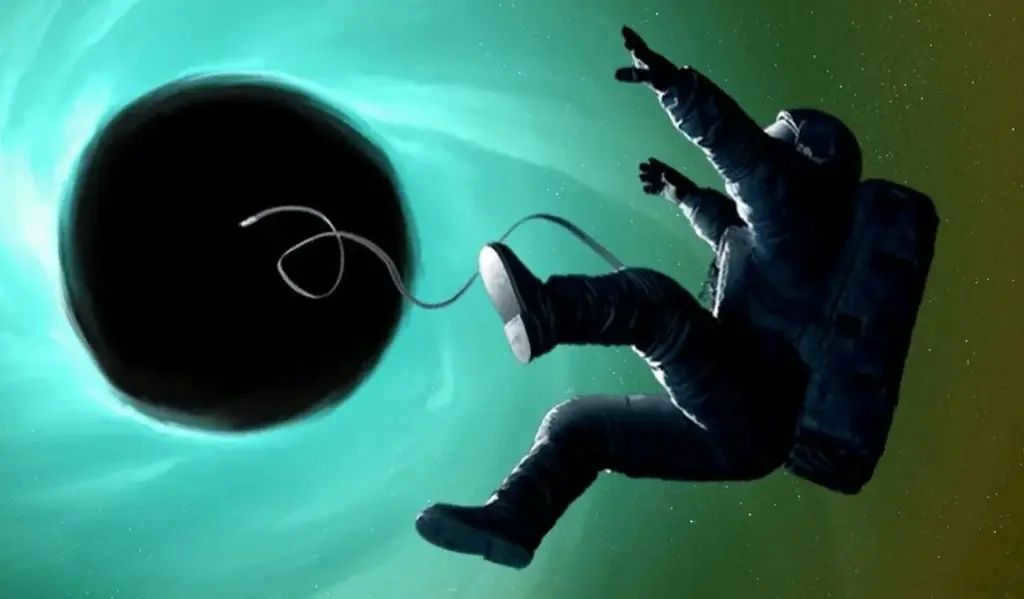

Specifically, the colossal black holes that lie at the heart of galaxies remain dormant for the majority of their existence. However, during their active phases, they consume stars and interstellar gas, causing the area surrounding the black hole to overshadow the entire galaxy in which it resides. Galaxies hosting active black holes are referred to as quasars. Despite the vast amount of knowledge we have acquired about black holes in recent decades, numerous enigmas persist. Most significantly, our understanding of the true nature of these cosmic voids may be entirely mistaken (assuming they are voids at all).
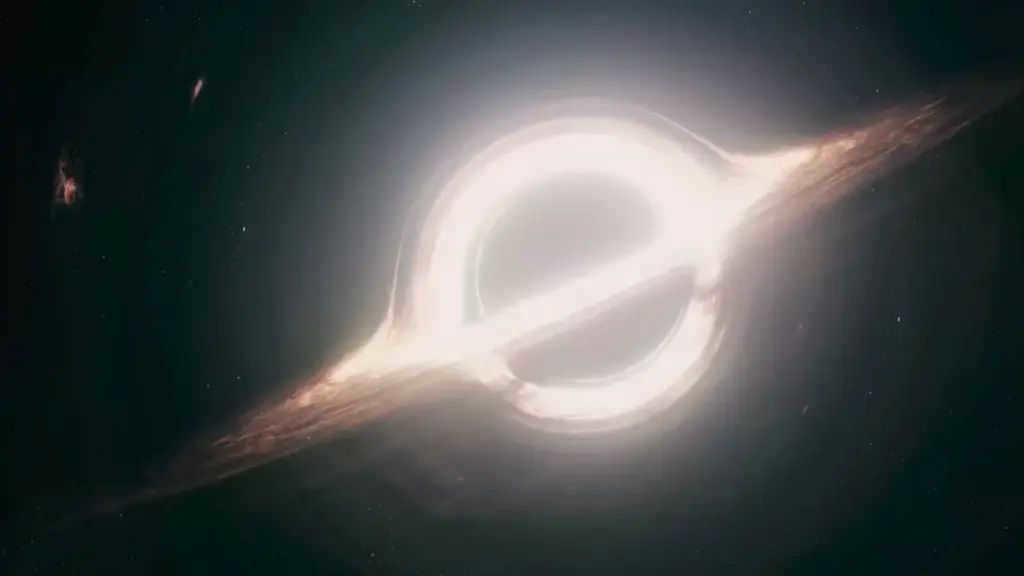
Black holes are believed to form when a massive star reaches the end of its life. Once the star’s nuclear fuel is depleted, its core collapses into an incredibly dense state of matter, which is about a hundred times denser than an atomic nucleus. Just try to imagine the magnitude of this! Because black holes do not emit light, they can only be detected when they interact with a normal star. By studying the properties of the normal star, astronomers can gather information about its mysterious black hole companion.
The very first black hole to be confirmed was Swan X-1, which is the brightest source of X-rays in the Swan constellation. Since then, approximately 50 black holes have been identified in systems where a normal star orbits around a black hole. It is estimated that there are around 10 million black holes scattered throughout the Milky Way galaxy.
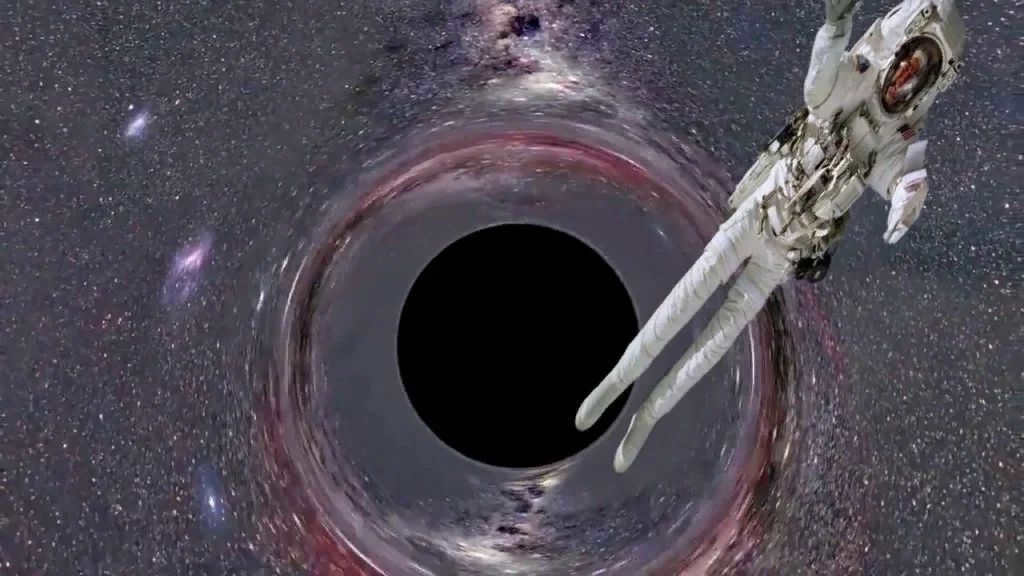
Black holes serve as the final resting place for matter, with nothing able to escape their gravitational pull, not even light. The concept of black holes is mind-boggling. If a human were to fall into a black hole, the experience would undoubtedly be excruciating. The late Stephen Hawking referred to this process as “spaghettification.” Essentially, the intense gravity of the black hole would stretch and tear apart every component of the human body, from bones and muscles to tendons and even molecules. In this scenario, Dante’s words from “The Divine Comedy” resonate: “Abandon hope, every man who enters here.”
Every galaxy harbors a ravenous creature

Over the past 30 years, the Hubble Space Telescope has provided evidence that every galaxy contains black holes in their centers. Furthermore, larger galaxies tend to have larger black holes.
Nature has created an astonishing variety of black holes, ranging from relatively small ones that are only a few times the mass of the Sun, to monstrous ones that are tens of billions of times more massive. This is akin to the difference between an apple and the Great Pyramid at Giza.
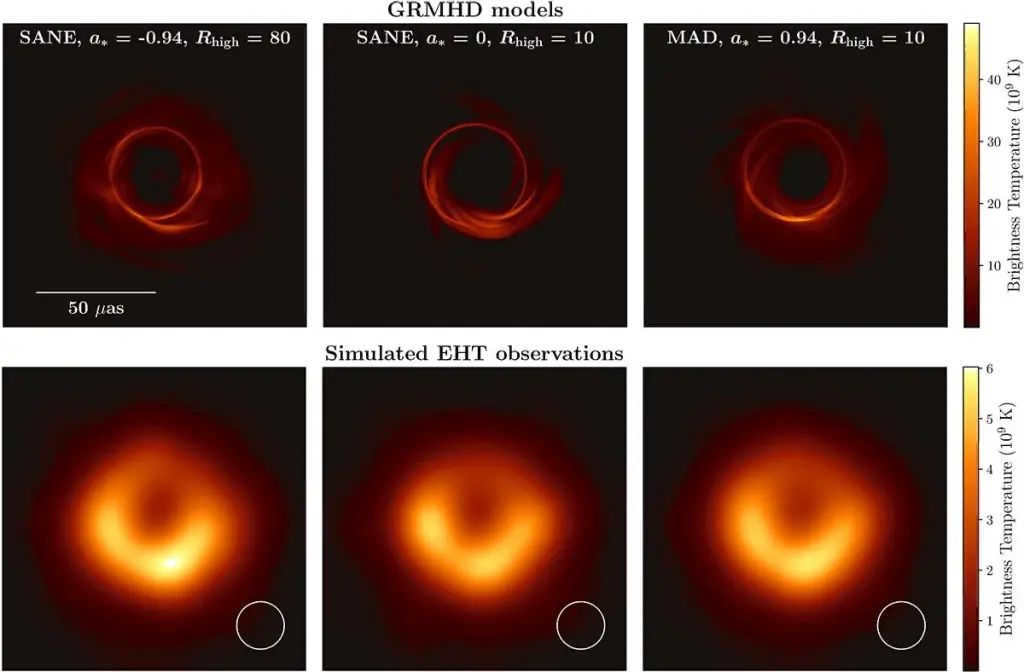
Just last year, astronomers unveiled the inaugural image of a black hole and its event horizon-a behemoth with a weight of 7 billion times that of our sun, M 87.
It surpasses the size of the black hole in our own galaxy, for which the discoverers were honored with the Nobel Prize this year, by over a thousandfold. These black holes remain mostly dark, but when their gravitational pull draws in nearby stars and gas, they unleash immense activity and emit massive amounts of radiation.
Enormous black holes pose a dual threat. If you venture too near, the immense gravity will consume you. And if they are in the active phase of a quasar, you will be bombarded with high-energy radiation.
How luminous is a quasar? The simplest and most concise answer is that Quasars are the most brilliant entities in the cosmos.
Supermassive black holes are peculiar
The most massive black hole discovered to date has a weight of 40 billion times the mass of the Sun, equivalent to 20 times the size of the solar system. While the outer planets in our solar system take 250 years to orbit on their axis, this significantly larger object completes a rotation every three months. Its outer edge is moving at half the speed of light. Similar to all black holes, it conceals its core behind the event horizon. Presumably, at the cores of all black holes lies a singularity, a point in space where the density is infinite. We are unable to comprehend the interior of a black hole as the laws of physics do not apply there. Physicists assert that time comes to a standstill at the event horizon, while gravity becomes infinite within the singularity.
Great news awaits!
Surviving a plunge into one of the colossal black holes is possible – their gravitational pull may be stronger, but the tensile force is comparatively weaker. Fear not, as it won’t spell your demise. However, the downside is that once you reach the event horizon, there’s no turning back. Regrettably, nothing can escape the clutches of the event horizon, rendering it impossible to share the wonders you encountered within.
Did you find this article fascinating? Don’t miss out on future ones by subscribing!
According to the principles of the general theory of relativity, black holes are believed to have an infinite lifespan. This notion persisted until British scientist Stephen Hawking applied the principles of quantum mechanics (which govern the behavior of elementary particles) to the study of black holes. Prior to Hawking’s work, there was no way to reconcile the general theory of relativity with quantum mechanics. However, Hawking’s efforts resulted in a remarkable discovery. In 1975, he published his findings, and we will now attempt to explain them to you.
For a physicist, the concept of a vacuum goes beyond just emptiness and nothingness. In the vacuum, elementary particles are continuously being created and destroyed. These particles, known as virtual particles, exist for only short periods of time. Virtual particles always appear in pairs. When a pair of particles is formed near the event horizon of a black hole, they are subjected to the gravitational force. After approximately 10-24 seconds, the pair disintegrates. One particle falls into the black hole, while the other manages to escape. The escaped particle, fueled by external energy, becomes real. As it moves away from the black hole, its energy increases. This flow of particles is known as “Hawking radiation” and allows us to detect the presence of nearby black holes. The first particle in the pair is assigned negative energy. According to Einstein’s famous equation (E = mc2), when it enters the black hole, it not only loses energy but also decreases in mass according to the calculated value from this formula. From an external perspective, it appears as though the black hole is gradually shrinking or “evaporating”. Giant black holes primarily emit particles such as photons and neutrinos, while smaller black holes also emit heavier particles.
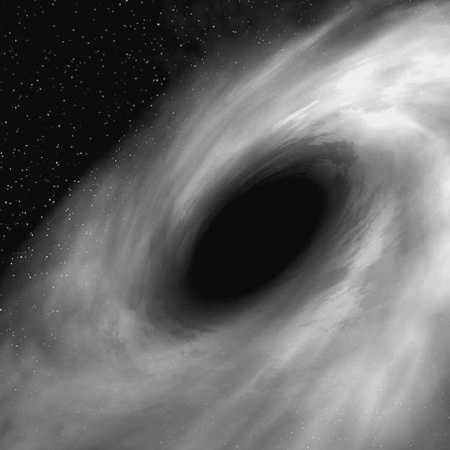
Hawking radiation has the capability to detect the existence of a black hole.
Therefore, black holes are also gradually reducing in size. However, this process occurs at a very gradual pace. For instance, consider a black hole that has a mass three times (just three times!) that of our Sun. It would require approximately 10.67 years for it to completely evaporate. What does this duration signify? It is roughly equivalent to 10.57 times the present age of the Universe.
Instead of a black hole, only a minuscule yet stable cluster of particles, measuring approximately 10 -33 centimeters, known as the Planck length, could possibly remain. These “clusters” may potentially represent a novel type of elementary particles, previously unknown to science, that are remnants of former black holes. Although their existence has not yet been substantiated, scientists have already coined various names for them, such as “maximon,” “plankeons,” “informons,” “infotons,” or “cornucopia” (derived from the English term “cornucopia,” meaning “horn of plenty”).
During the early 1970s, Stephen Hawking proposed the existence of miniaturized black holes, also known as “primordial” black holes, in addition to the large black holes that form from exploding stars. These primordial black holes would have formed shortly after the Big Bang in regions of space where the local mass and energy density were exceptionally high. Calculations suggest that just a thousandth of a second after the Big Bang, the density of these black holes exceeded that of an atomic nucleus.
Analysis of the cosmic background radiation provides evidence that such fluctuations indeed occurred. These fluctuations were responsible for the formation of stars, galaxies, and possibly miniature black holes. Without these fluctuations, it is likely that matter would be uniformly distributed throughout the Universe.
According to calculations, the average weight of miniature black holes was 10^18 grams, which is equivalent to 10^-15 solar masses. This is similar to the weight of a typical mountain on Earth. The event horizon radius of these objects was 10^-12 meters, making them incredibly small on a subatomic scale.
According to calculations, the evaporation rate of a black hole increases as its mass decreases, as the gravitational force it exerts becomes weaker and more particles are able to escape. Consequently, the temperature of the black hole rises, causing it to become extremely hot. Eventually, its temperature reaches several million kelvin. The evaporation of a small black hole results in the release of energy comparable to that of several million hydrogen bombs exploding. The lifespan of these miniature black holes is estimated to be approximately 13.5 billion years. It is highly likely that they are currently evaporating one by one, and the spectacular gamma-ray bursts occasionally observed by astronomers serve as evidence of this process. However, conclusive proof of this hypothesis has not been obtained yet.
Regarding black holes, which are formed when stars explode, they possess the opposite characteristic of being very cold. This means that their radiation intensity is low and they gradually decrease in size. Consequently, a black hole with a mass ten times greater than that of the Sun has a temperature that is only a few billionths of a kelvin. Remarkably, this black hole is significantly colder than the surrounding area, where the average temperature is around 4 Kelvin. Interestingly, the black hole is actually warming up and gaining mass. Consequently, as previously mentioned, the lifespan of such a black hole is longer than the age of the Universe itself.
"In classical physics, there was no issue with the loss of information," reminisces Stephen Hawking. – Conventional wisdom suggests that a black hole has eternal existence, and it can be inferred that information will be conserved within its interior, albeit not easily accessible. The scenario took a turn when I made the groundbreaking discovery that a black hole emits radiation as a result of quantum effects. By making a reasonable approximation, it can be postulated that this radiation is entirely thermal and, thus, devoid of any informational content. What becomes of the information contained within the black hole’s interior when it evaporates and ceases to exist?"
If the information is lost forever, it would mean that the world, according to the latest discoveries in physics, would descend into a chaotic state where anything can happen, defying all laws. In simpler terms, not every final physical state of an object would definitively correspond to its initial state.
Following this, hypotheses emerged suggesting that black holes might still retain information about their predecessors – the objects from which they originated. Hawking’s radiation could potentially absorb this information and, as it dissipates into the surrounding space, carry it away. As Hawking put it, “This would imply that information inside the black hole is also preserved and reappears at an infinite distance from it.”
In Hawking’s reasoning, infinity encompasses everything that has escaped from the depths of a black hole, and the remarkable aspect of this is that it is able to disregard the influence of the black hole itself. Within this realm, the behavior of particles emitted by the black hole remains unaffected by the fluctuations of space-time caused by it. In this space, the principles of classical theory remain valid. Similarly, we can confidently assert that a human being, a collection of information dissipating into the abyss of death, is preserved at an immeasurable distance from the black hole, separate from their former self.
This passage serves as an introductory excerpt.
Related articles
Is the existence of white holes possible?
Are white holes real? Within spinning supermassive black holes, as theorized by certain astrophysicists, there is a seemingly insignificant fracture – a passageway that leads to what is known as a white hole. This black hole, which lies at the heart of our galaxy, also
AFRICAN AMERICAN MEDICAL FACILITIES
EBONY CANINE One of the most shadowy figures in the realm of paranormal occurrences is the ebony canine, a being typically found in rural areas of England and Wales. Stories of malevolent spirits taking the shape of dogs can be traced back to ancient British traditions, and are prevalent in different regions of the nation.
One issue I frequently encounter is that I tend to overcrowd scenes and include too much information. This is particularly noticeable when I am initially setting up the story and developing the establishing scenes and action.
BLACK HOLES.
BLACK HOLES are so dense that even light cannot escape from them. They act as a complete absorber of all types of electromagnetic radiation, similar to how a black surface absorbs visible light. The concept of a black hole
Black Holes and Neutron Stars
Black holes are formed when a star with a mass greater than three times that of the Sun collapses under its own gravity. The resulting object has a gravitational field so strong that even light cannot escape from it. The matter inside a black hole is still a topic of speculation and study.
Exploring the Universe: Chapter 8
Chapter 8 of the book “Exploring the Universe” is dedicated to black holes, which are considered to be monstrous objects in the universe. Alongside black holes, astronomers have also discovered other fascinating celestial objects such as pulsars, quasars, and neutron stars.
The mysterious realm of the black hole
Exploring the enigmatic universe of a black hole, scientists are now delving into the depths of this cosmic phenomenon. In their quest for knowledge, they have successfully obtained some insights, albeit through theoretical models. Consequently, these investigations have revealed that a black hole remains an enigma, shrouded in darkness.
Do white holes exist in the universe?
Existence of white holes in the universe is a topic of discussion. It is well known that Einstein’s theory of relativity can be applied to both forward and backward flow of time. Physicists have been contemplating the concept of time flow and its implications.
Ozone holes
For many decades, scientists have been conducting extensive research on the composition of the Earth’s atmosphere. Over time, new technologies and methodologies have emerged, allowing us to gather more detailed and valuable information. Satellite observations, in particular, have provided us with fascinating insights into the formation and behavior of ozone holes.
A black hole, on the other hand, is a celestial object characterized by its incredibly strong gravitational pull. Its gravitational force is so immense that even light cannot escape from its grasp. These enigmatic entities are formed from the remnants of massive stars, marking the final stage of their evolutionary journey.
A star is typically a conglomeration of numerous hydrogen atoms. Within the star’s core, the intense gravitational force triggers thermonuclear reactions that combine hydrogen atoms to create helium atoms, resulting in the release of immense amounts of energy. This energy, manifesting as radiation, counteracts the force of gravity and maintains equilibrium between the two. As long as there is an ample supply of hydrogen within a star, it will remain stable.
Stars that are more massive have the capability to generate heavier elements, including iron. Consequently, an iron core starts to develop within the star, which hinders the fusion process. Eventually, the star becomes enriched with iron to such an extent that the radiation emitted from thermonuclear reactions becomes inadequate to counteract the force of gravity.
The emergence of a black hole
When the equilibrium of forces is disrupted, the star starts to undergo collapse. Within a fraction of a second, the star implodes, compressing into itself. This entire progression is accompanied by the discharge of an immense quantity of energy, manifesting as a supernova blast. It is during this event that the majority of the dense chemical elements, which encompass our day-to-day existence, come into existence. Assuming the star possesses a sufficient mass, the resultant explosion will yield either a neutron star or a black hole.
The concept of the event horizon and singularity
When observing a black hole, our vision is limited to its boundary, known as the event horizon. Anything that resides beyond the event horizon would need to surpass the speed of light to escape the gravitational pull of the black hole. However, as it is currently understood, no physical object can achieve such a feat, making it impossible to venture beyond the confines of a black hole.
While the event horizon defines the outermost region of a black hole, what lies within remains a mystery. In the realm of science, there is no definitive answer to this question. Yet, mathematics provides us with a concept known as the singularity, which is believed to exist at the center of a black hole. Although its physical nature is not fully comprehended, mathematical equations describe the singularity as a point mass with zero volume and no surface. This mathematical representation can be likened to the concept of dividing by zero.
When you envision black holes, you likely picture extremely dense and highly massive areas of space that trap everything, including matter, antimatter, and even light! You may also assume that they persistently consume anything unfortunate enough to come into contact with them, including dark matter. However, at a certain point, every black hole in the cosmos will not just cease to expand, but will also start to diminish and shed mass until it completely evaporates! In this week’s installment, we address a query from Paul Zuzhelsky, who inquires:
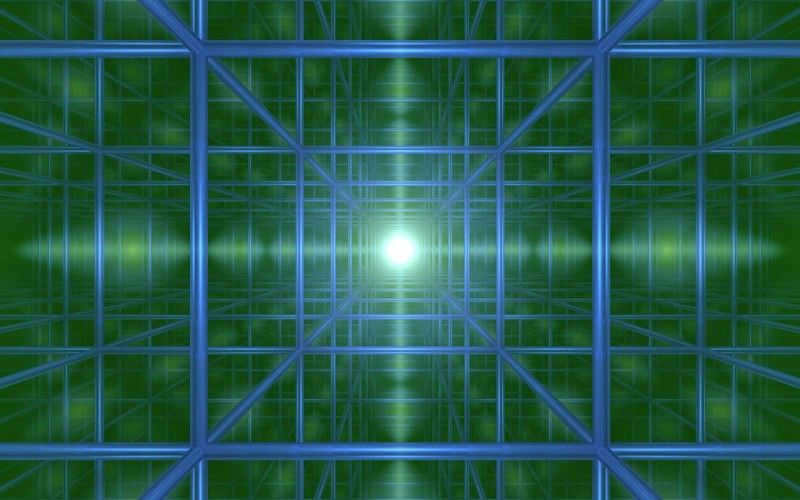
This subject is very intricate, however, one that we comprehend. Let us commence by discussing the appearance of vacant space.
In Einstein’s theory of relativity, space and time are intertwined and compose a four-dimensional fabric called spacetime. If you were to eliminate all particles in the universe and place them at an infinite distance from your desired location, if you were to disregard the expansion of space in the equations, if you were also to eliminate all forms of radiation, as well as the inherent curvature of space – then you could claim to have created a flat empty space.
Perhaps you are acquainted with the concept that there exist inherent uncertainties regarding certain parameters in the vast expanse of the universe at quantum scales. It is impossible for us to possess simultaneous knowledge of both the position and momentum of a particle, and the more accurately we measure one of these quantities, the greater the uncertainty of the other. A similar relationship of uncertainty is inherent in the domains of energy and time, which holds significant importance for us in the present moment.
If you observe what you perceive as vacant space, but you observe it at a specific moment in time, it is important to acknowledge that a moment is an infinitesimal duration. Due to this inherent uncertainty, there exists a significant uncertainty in the total energy content even within the supposedly empty space at that moment. As a result, it is theoretically possible for multiple pairs of particles and antiparticles to exist for extremely brief intervals, as long as they adhere to the established conservation laws of the physical universe.
Allow me to reiterate, as it holds great significance: there is energy inherent in the empty space itself, and it can be depicted as a culmination of quantum fluctuations inherent within this space.
Let’s move forward. Let’s envision a scenario where space, instead of being flat and empty, is still empty but now curved – meaning there are variations in the gravitational field of space.
What would our quantum fluctuations appear as? Specifically, if we allow space to distort due to the presence of a black hole, how would they manifest outside and inside the event horizon?
These queries are thought-provoking, and often when seeking an answer, you’ll come across the following (incorrect) depiction, which captures the essence of Paul’s inquiry:

In the case where we consider particle/antiparticle pairs as actual entities, and in the event that one manages to escape from the black hole while the other remains trapped within the event horizon, we can conclude that the overall energy of the Universe increases. This additional energy is divided equally between the portion outside the black hole and the mass of the black hole itself. However, it should be noted that these pairs of particles and antiparticles are not tangible in reality, but rather serve as a visual and computational tool for understanding the energy inherent in space.
The key idea is that within a curved spacetime, as you may recall, there exist variations in the gravitational field. We utilize these variations to aid in visualizing the inherent energy within empty space. However, there can exist fluctuations originating outside the event horizon that manage to enter the horizon prior to their re-annihilation. It is crucial to note that energy cannot be extracted from empty space without consequences; a certain process must occur to maintain energy conservation. Hence, whenever a virtual particle (or its corresponding antiparticle) falls inside the event horizon, a genuine photon (or a group of them) must manifest in order to compensate. This real photon subsequently departs from the event horizon, thereby carrying away energy from the black hole.
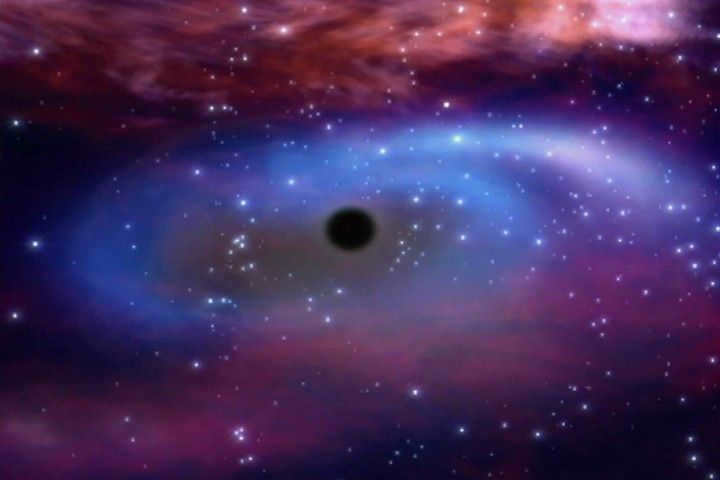
The previous method we used to visualize the process, where one of a pair of particles would fall while the other one escaped, is too simplistic to be of any use. This is because it is not the particles or antiparticles themselves, but rather the photons corresponding to the blackbody spectrum, that contribute to the contraction of black holes.
I would prefer a more accurate depiction, although it is still somewhat simplistic. Imagine quantum fluctuations in which every time a particle-antiparticle pair is created, with one particle falling inward, another particle-antiparticle pair is also created, with another particle falling inward. The remaining particle-antiparticle pair outside of the black hole annihilates, emitting real photons, while the particles falling inward take the appropriate amount of mass (E = ms 2 ) from the black hole.
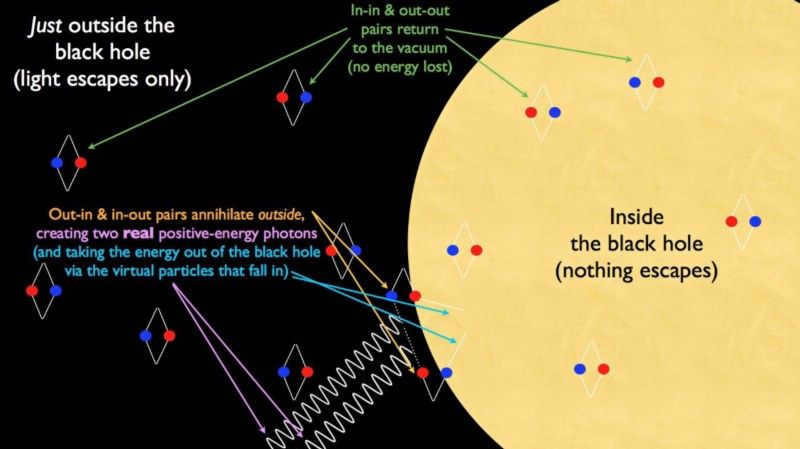
While the analogy is not perfect (since it is merely an analogy), it does illustrate the concept of photons escaping the event horizon, aligning with the predictions of Hawking radiation. In reality, detailed calculations using quantum field theory in curved spacetime would be needed to determine the exact characteristics. According to Hawking radiation, the spectrum of a photon would resemble that of a black body with a specific temperature.
By considering the temperature, we can determine that a black hole with the same mass as our Sun would have a temperature of less than one microKelvin. Similarly, the black hole at the center of our galaxy would have a temperature of less than one picoKelvin, and the largest known black hole would have a temperature of only a few tenths of an attoKelvin. The rate at which this radiation is reduced is so small that black holes will continue to grow, even if they absorb just a single proton over a time period comparable to the age of the Universe, which is estimated to be another 10^20 years.
However, after this period, black holes with the mass of our Sun will finally begin to lose more energy than they absorb due to Hawking radiation. Over a period of 10^67 years, these black holes will completely vaporize. The largest black holes will take even longer, approximately 10^100 years, to shrink and emit photons. While this timeframe may extend far beyond the age of the universe, it is not an eternity.
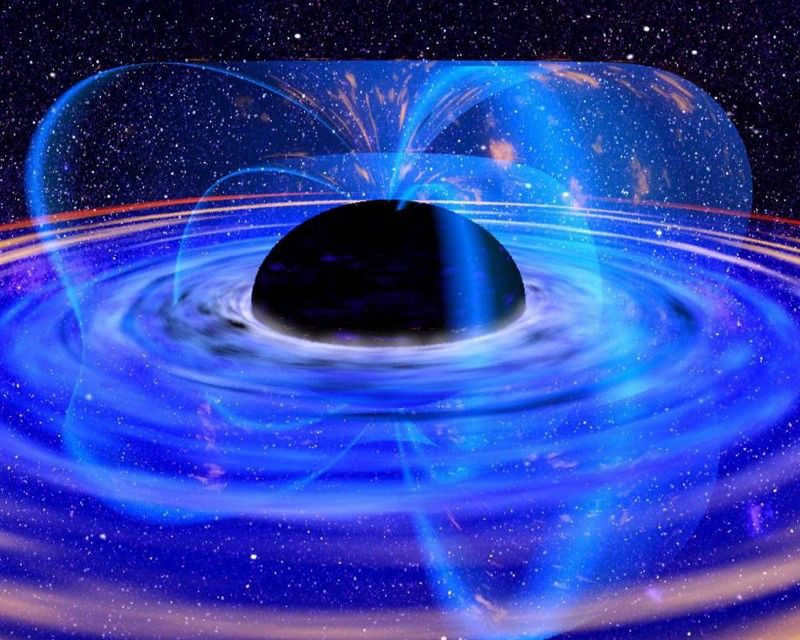
To sum up, the absence of matter in space results in zero level energy, which should not be confused with actual zero. In the case of a black hole’s event horizon, there exists a low energy range of radiation emitted by a completely black object. This radiation gradually reduces the mass of the black hole and causes a slight contraction of the event horizon over time. If we consider the radiation as particle/antiparticle pairs, it is preferable to envision two pairs simultaneously. In this scenario, one particle from each pair annihilates with its corresponding antiparticle, producing real photons that escape from the black hole. Meanwhile, another virtual pair of particles enters the black hole, absorbing its energy (or mass).
This is how black holes ultimately meet their demise! Many thanks to Paul for posing such an intriguing question. If you have any further queries or suggestions, please feel free to send them my way.
There is currently a significant amount of discussion surrounding black holes. These celestial bodies revolve around the central region of the galaxy, consuming an amount of matter equivalent to half the mass of the Sun on a daily basis, and retaining information about the early stages of the universe. Black holes are undeniably captivating astronomical phenomena. Let’s delve into our knowledge about these enigmatic entities.
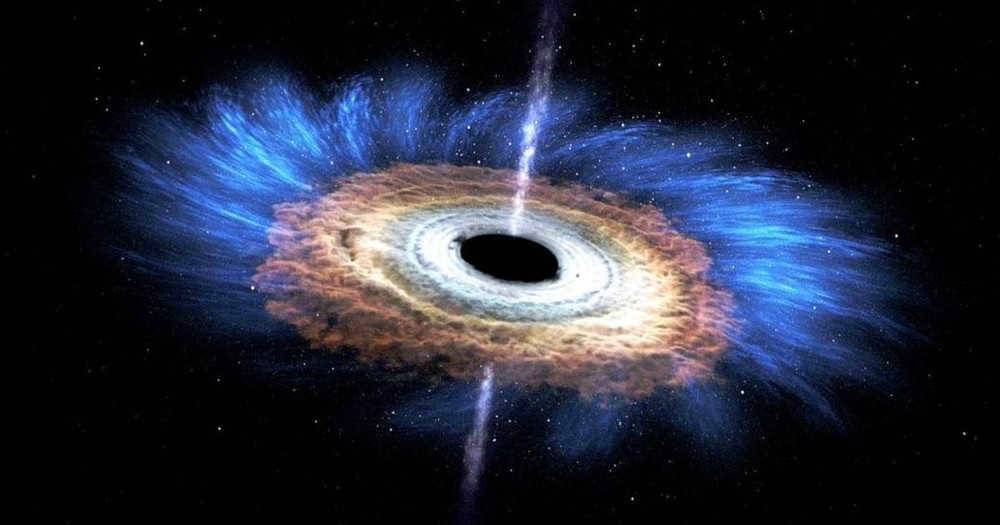
Black holes come into existence through the process of dying. They are created when stars, which are at least three times larger than the Sun, exhaust their fuel and expel their outer layers in a violent explosion. The intense internal pressure obliterates the star’s core, causing it to collapse. If the star’s mass is greater than three times that of the Sun, the collapse will continue indefinitely, resulting in the formation of a black hole.
In the vast expanse of the universe, black holes often coexist with stars: some die, while others are born. The larger a star’s mass, the more quickly it consumes its fuel and fades away. When a massive star reaches the end of its life and undergoes a catastrophic explosion, the resulting shockwave compresses a vast amount of gas and dust in space, triggering the birth of new celestial bodies.
There are multiple theories surrounding the origins of supermassive black holes. One possibility is that they arise from the collapse of exceptionally dense areas in the early universe. While hot gas and dust typically compressed into stars during this time, it is conceivable that different chemical processes following the Big Bang allowed for continued compression in certain regions, resulting in the formation of black holes.
Another theory suggests that supermassive black holes are the product of multiple smaller black holes merging together. This theory posits that these mergers occur at the center of young galaxies, ultimately leading to the creation of the supermassive black holes that we observe today.
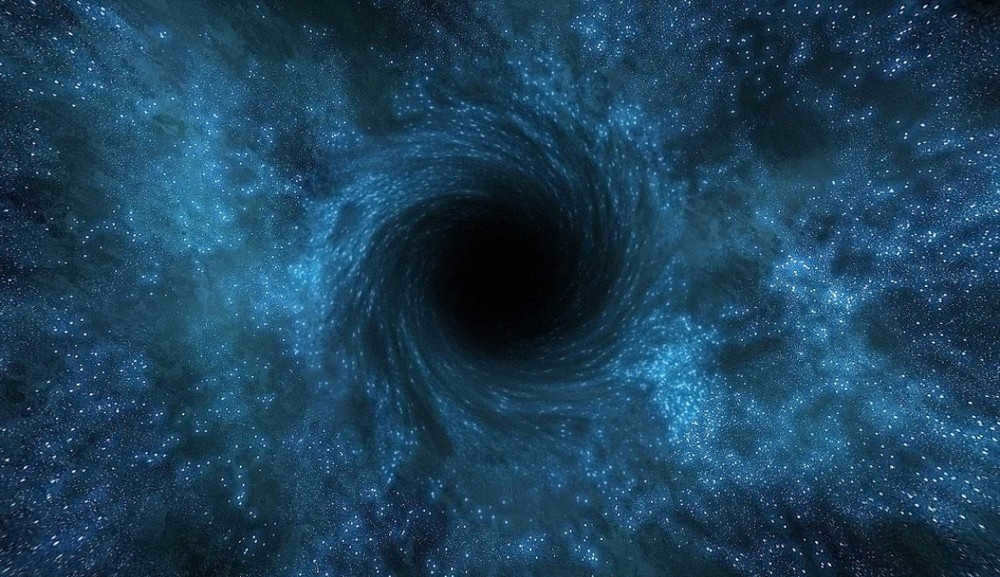
However, it is not possible to assume that every supermassive black hole originated from a regular black hole. The current black holes we are familiar with are too small to undergo the transformation into such massive cosmic entities during their lifespan. Scientists propose the existence of an intermediate form between stellar-mass black holes and supermassive objects, known as medium black holes, but they have yet to be identified. This is not because they do not exist, but rather because they are likely located at a considerable distance from us, causing their X-ray radiation to be obscured by radiation emitted from other celestial bodies.
A black hole undergoes transformation by assimilating matter. Its gravitational pull is so immense that any objects or particles that enter the black hole are unable to escape. Collapsed stars and planets are drawn in, but gas is the most easily absorbed substance, filling the black hole like water fills a bathtub.
Occasionally, black holes combine with one another, and detecting this phenomenon is exceptionally challenging since it involves the merging of two invisible entities. In 2015, scientists were able to observe this process for the first time through the study of gravitational waves.
The most intriguing question is whether a black hole can meet its demise. Theoretically, it is possible.
Stephen Hawking was a firm believer in the existence of Hawking radiation, which is a hypothetical phenomenon that could potentially cause the death of a black hole. Initially, it was widely believed that black holes did not emit any form of radiation, as their gravitational pull was so strong that no particle, including light particles, could escape. However, the field of quantum physics has debunked this theory.
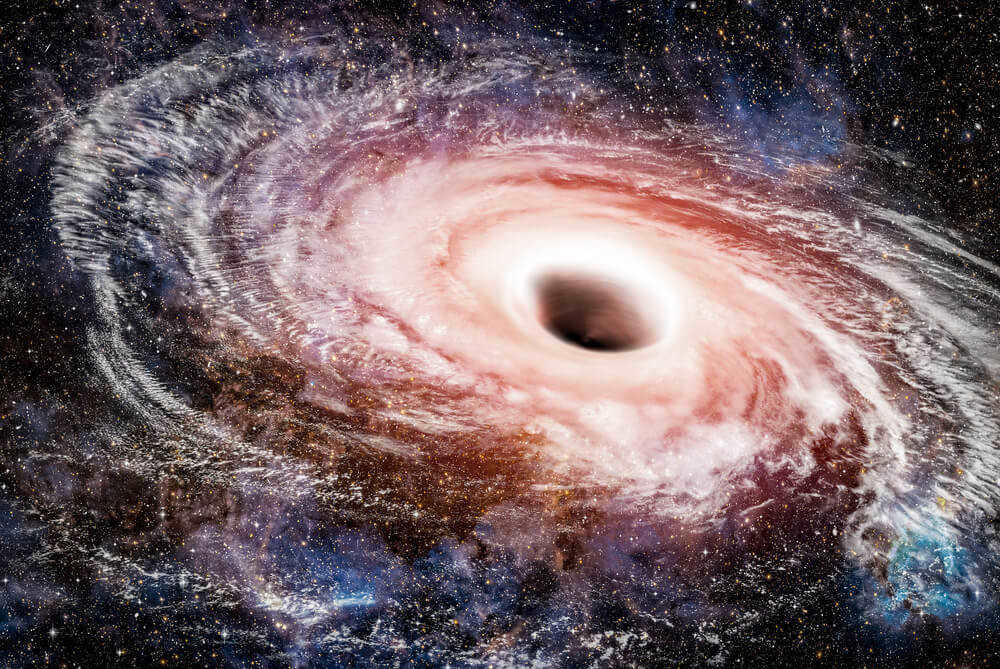
It has been discovered that pairs of particles and antiparticles exist at the boundary of a black hole. Normally, these particles collide and destroy each other, releasing energy. However, in this case, one of the particles falls into the black hole while the other escapes into space, taking energy away from the object.
In theory, if no additional energy enters the hole (which it does), it will eventually radiate away completely. However, even under these conditions, it would take 1054 years for the hole to start dying, making it unlikely for Hawking radiation to be observed in practice. The validity of the scientist’s findings can only be proven in a laboratory setting.
As per the prevailing hypothesis regarding the progression of the Universe, it is believed that its eventual demise will be characterized by a state of coldness. The stars would exhaust their fuel and subsequently cease to burn, resulting in the presence of only massive black holes. However, even these colossal entities would eventually undergo a process of evaporation. This concept of black holes dissipating was put forth by the esteemed Stephen Hawking, who postulated that, under specific conditions, black holes emit elementary particles, predominantly photons. Nevertheless, there are valid inquiries that can be raised in this regard. If black holes are capable of evaporating, does this imply that the matter ensnared within them escapes the confines of the singularity? Furthermore, what exactly transpires with the singularity itself?
Before delving into these inquiries, let us first recall the definition of a black hole. Essentially, it is a celestial body of immense mass that exhibits such intense gravitational forces that all matter within it collapses towards the center, resulting in the formation of a singularity – a point at which metric quantities approach infinity. Black holes are typically created through the collapse of massive neutron stars, although any object compressed to a critically small size has the potential to become a black hole. The gravitational pull exerted by a black hole is so overpowering that any matter in its vicinity will be drawn towards the singularity, with particles accelerating to the speed of light upon reaching the event horizon.
This signifies that once matter particles or radiation traverse the event horizon, they are unable to reverse course and return. This is due to the fact that doing so would necessitate surpassing the speed of light, which is an impossibility.
However, if this statement holds true, what mechanisms allow black holes to shed mass and ultimately evaporate?
If you incorporate the principles of quantum physics into your calculations, everything falls into alignment.
As per the tenets of quantum theory, energy is inherently connected to space, forming what is known as the quantum vacuum. This quantum vacuum exhibits different behavior in the warped space of a black hole compared to flat space. Remarkably, radiation from a black body into the surrounding region of space is indeed possible, as supported by quantum field theory. The degree of curvature in the space surrounding the Schwarzschild sphere directly impacts the strength of Hawking radiation, with smaller black holes experiencing more pronounced curvature and consequently exhibiting more rapid vaporization compared to their massive counterparts.
Humanity runs the risk of being eradicated from existence due to various cosmic phenomena such as an aging Sun, extraterrestrial beings, celestial bodies, and countless other enigmatic surprises lurking in the vast cosmos. In the event that you find yourself desensitized to the climate predictions put forth by Greta Thunberg, brace yourself for the mind-boggling forecasts detailed in the upcoming book “Death from Heaven: The Science of the End of the World” by acclaimed American astronomer Phil Plait, set to be released in January by Alpina Non-Fiction. Here, we present a captivating excerpt that delves into the cataclysmic scenario that could unfold if a black hole were to materialize in close proximity to Earth.
There’s an amateur stargazer who is constantly on the lookout for any early signs of trouble. He had originally planned to capture some images of Uranus with his automated telescope, but the computer kept turning it in the opposite direction. After switching to manual mode, the stargazer eventually locates the planet a few minutes away from its expected position. Perplexed, he contacts a friend who is experiencing the same issue. After scouring various online forums, they discover that astronomers worldwide are facing similar problems.
As the days pass, the situation only worsens. Now, it appears that something peculiar is occurring with Jupiter as well. However, Saturn, situated on the opposite side of the Sun, seems unaffected. Speculation and rumors begin to circulate.
Then things take a very strange turn. A solar observation and heliospheric research observatory, orbiting at the point where the gravitational forces of the Earth and the Sun are balanced, starts to experience a shift. The engineers are left puzzled, but their challenges are far from over. Now, Mars is no longer in its expected position.
A NASA probe is en route to the Red Planet: will it collide with Mars? However, this question is soon cast into doubt as the spacecraft itself begins to shift. After a few days, it becomes evident that the probe is adrift… and that this is just the beginning of our troubles.


Scientists who study the Sun have made an interesting observation – its position has unexpectedly changed. This discovery raises many questions. How is it possible for an entire star to move? However, upon closer examination, researchers come to a startling realization. The issue lies not with the Sun, but with our own planet, Earth. Just like the other planets, Earth is no longer following its usual orbit around the Sun. Instead, it is slowly drifting away from its intended path.
Fear spreads. Scientists reach a clear conclusion: an unidentified object is approaching the Earth, causing gravitational disturbances.
Based on the movements of other planets, they calculate the position of this object, but there is no visible trace in that specific area of the sky.
Ironically, it is the absence of any visible object that confirms their worst fears: it is a black hole. After analyzing its trajectory, it becomes evident that it is heading directly towards us at an astonishing speed of km/s. Astronomers estimate its massive size to be ten times that of the Sun, a force capable of bringing about the apocalypse. Initially, its gravitational pull is barely noticeable, but it rapidly intensifies.
Just a couple of weeks after the initial signs of trouble are spotted, when the immense black hole is still a staggering 480 million kilometers away, its gravitational impact on our planet is likened to that of our very own Sun. Our Earth is no longer solely orbiting around one celestial body; it is now entrapped by two – one that is alive and thriving, and one that has met its demise. In just a matter of days, the influence of the colossal black hole surpasses that of our Sun. With invisible tendrils, the imploding star seizes hold of our Earth, yanking it away from the comforting warmth of the Sun and drawing it ever closer to its own unfathomable abyss.
As this colossal celestial entity edges closer, the gravitational tidal forces emanating from the black hole commence their relentless task of stretching our Earth to its limits. We are all familiar with the tides caused by the Moon, but the black hole in question possesses a mass that is an astounding 200 million times greater than that of our lunar companion.
Even from millions of kilometers away, the immense gravitational pull of the black hole leads to massive floods, powerful earthquakes, and gigantic tsunamis.
Before long, the decisive impact occurs. As the black hole gets within a mere distance of 11 million kilometers, its gravitational forces, experienced by objects on the Earth’s surface, become comparable to those of the Earth itself. The small group of individuals who managed to survive the previous events suddenly find themselves experiencing weightlessness as they are pulled in both upward and downward directions with equal intensity.
After a few minutes pass, as the black hole draws even nearer, the upward force starts to dominate. A violent hurricane-like gust of air propels the weightless individuals away, along with rocks, cars, and even entire oceans….
After sixty minutes, the devastation is complete. The immense gravitational forces emanating from the deceased star tear apart the Earth, reducing it to vapor.
The substance that once constituted our beloved planet descends into the insatiable abyss, swirling at an increasingly rapid pace, forming a scorching plasma disk reaching temperatures of a million degrees before hurtling away into the void.
With an eerie tranquility, the black hole proceeds on its trajectory, distancing itself from the solar system, leaving behind a wake of pandemonium, scattered celestial bodies, and death.
The enigma of black holes
What exactly are these enigmatic phenomena known as black holes? The mind-boggling principles of physics, the immense destructive force they possess, how do they inexplicably distort our understanding of reality, space, and time?
Perhaps our fascination with black holes stems from their undeniable coolness.
Emerging from the fiery core of a supernova, announcing their presence with twin beams of unrelenting fury that transcend all barriers, and consuming (almost) everything in their path, black holes have firmly established themselves in the collective consciousness. Movies, TV shows, books, countless articles, and endless debates are dedicated to exploring the mysteries of black holes. Yet, despite all this admiration and curiosity, most individuals possess only a vague comprehension of what black holes truly are and the extraordinary powers they wield.
Nevertheless, we must never forget – black holes are inherently perilous.
If you don’t want to invite trouble, all of these methods are highly improbable, but if your goal is to cause massive destruction, then a black hole is a brilliant choice.
I’ve stumbled and I’m unable to stand
A black hole is an entity with an escape velocity (second cosmic velocity) that is equal to or greater than the speed of light. This implies that anything that falls into the black hole is unable to escape it because, based on our current knowledge, nothing can surpass the speed of light.
Hence, the primary and most evident danger associated with a black hole is literally falling into it. If such an event occurs, there’s no way out. It’s a journey with no return. You’re finished. There’s nothing more to discuss.
It’s not an overly impressive method for a black hole to handle you – no death beams, no massive and terrifying destruction. Simply bam! And you’re gone.
This lack of excitement is somewhat dull for a narrative. However, it also goes against common sense. If you’re aboard a rocket hurtling towards a black hole, can’t you simply turn the rocket around, activate the engines at maximum power, and escape?
No, you cannot. The immensely strong gravitational forces near a black hole compel us to alter our perception of space, time, and movement. If black holes were merely another massive object, you would be fine. But black holes are not just any familiar object!
Einstein made a significant contribution to science by proposing that space is not a void but rather a tangible entity. It can be likened to a fabric that supports massive objects.
When an object possesses mass, it exerts gravitational forces, which in turn cause space to warp (as demonstrated in the previous chapter with the analogy of a bowling ball on a mattress). As a result of this gravitational force, the path of any object passing near a more massive object will be altered by the deflection of space.
CRITICAL NOTE. When someone attempts to explain the concept of black holes distorting space, they invariably resort to the analogy of a flat surface being bent by a heavy object, such as a mattress beneath a bowling ball. Regrettably, this comparison gives rise to the misconception that black holes are circular in a funnel-shaped curved space. However, this is an incorrect notion: reality exists in three dimensions, whereas this analogy only utilizes two dimensions (the surface of the mattress can be considered two-dimensional, but the bowling ball gives it a third dimension by curving it). Black holes are actually spherical, and the curvature of space does not resemble a funnel. In truth, describing the shape of curved space is exceedingly challenging because we inhabit these dimensions, and attempting to articulate them is akin to explaining the color red to someone who has been blind since birth. We can describe curvature using mathematical formulas, make predictions about it, and possibly even employ it to comprehend other phenomena in physics, but mentally visualizing it is nearly, if not entirely, impossible.
Thus, all the subsequent depictions of waterfalls and cliffs and other similar imagery are merely comparisons, two-dimensional representations of the distorted three-dimensional reality. This may not alleviate your unease, but the universe has a tendency to unsettle us. If it did not, this book would lack any material to write about.
Now, let us return to the regularly scheduled demise and devastation caused by black holes.
However, a black hole does not merely create a deviation in the fabric of space; instead, it carves out an unfathomably deep chasm with perpendicular walls. Once an object enters this void, there is no escape, regardless of its velocity.
Once inside, there is no resistance to impede your descent. The velocity required to break free from the gravitational pull of a black hole, known as the event horizon, is equal to the speed of light.
To gain a more precise understanding, it is necessary to employ Einstein’s mathematical equations and the principles of relativity. Andrew Hamilton, an astrophysicist at the University of Colorado at Boulder, has extensively researched black holes and offers an intriguing analogy:
It can be easier to comprehend the phenomenon of a black hole if you visualize it as a waterfall. However, instead of water, it is space itself that is cascading into the black hole. Beyond the event horizon, the rate at which space falls is slower than the speed of light. At the horizon, space plummets at the speed of light. Within the horizon, space plunges even faster than light, carrying everything within it, including light. This depiction of a black hole as a region of spacetime where space descends faster than light is not merely an aesthetically pleasing illustration… it is grounded in solid mathematical principles [emphasis mine].
If you find yourself within the event horizon, the gravitational pull is so strong that space is being sucked into the black hole at a speed faster than that of light. And if you attempt to escape, you will be dragged along with it.





